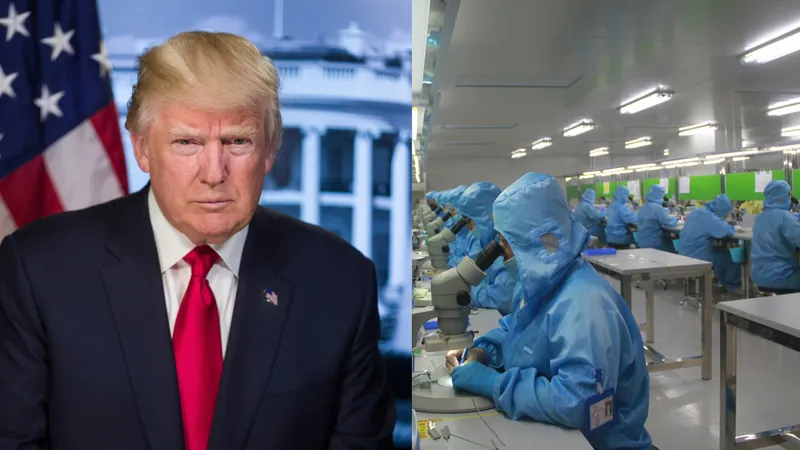
China's Semiconductor Surge: How Huawei and Xiaomi Are Changing the Game
2025-08-28
Author: Benjamin
For years, the United States reigned supreme in the semiconductor market, applying intense pressure on China through trade restrictions targeting tech giants like Huawei and Xiaomi. Yet, in a surprising twist, Beijing has made a stunning comeback.
The Turning Point: Sanctions as a Catalyst
Since 2019, U.S. sanctions have barred Chinese companies like Huawei from accessing advanced components from American tech giants, including Qualcomm and Intel. The goal? To halt China's technological ascent and maintain America's lead in semiconductor innovation. However, these restrictions backfired, spurring significant investments in China's electronics sector.
National Investment: A Strategic Shift
The Chinese government has poured billions of yuan into research, training, and the domestic production of chips, focusing on manufacturing capabilities even if these chips currently lag behind the cutting-edge 3 or 5 nanometer technology from Taiwan and Korea.
Power Players: Huawei and Xiaomi Lead the Charge
Huawei's comeback with its proprietary Kirin 9000S processor, featured in the Mate 60 Pro, has sparked apprehension in Washington. Produced in SMIC factories, this system-on-a-chip is irrefutable evidence that China can locally craft advanced chips, despite ongoing embargoes. Meanwhile, Xiaomi has stepped up its game by developing its own semiconductors for applications like camera systems and energy management.
A New Era of Independence
Although these chips aren’t yet on par with the latest Qualcomm or Apple offerings, they emphasize a pivotal shift: China is reducing its reliance on foreign technologies. The semiconductor industry is now pivoting towards national standards and alternative architectures like RISC-V, which offer greater freedom from Western oversight compared to traditional architectures such as ARM and x86.
A Bold Strategy of Innovation
This acceleration is driven by a comprehensive development strategy, which includes establishing research institutes, funding local foundries like SMIC, supporting etching machine manufacturers, and promoting reverse engineering. Beijing believes that innovation can stem from imitation, followed by enhancements.
American Anxiety: The Stakes Are High
With this dynamic shift, the U.S. is increasingly anxious about losing its competitive edge. Recent reports suggest that China could produce high-end chips independently within a decade, a scenario that threatens to disrupt the global tech balance.
While China may not have clinched victory in the semiconductor race just yet, it has demonstrated that embargos can indeed ignite innovation rather than suppress it. Huawei and Xiaomi represent the forefront of a national strategy to reclaim technological prowess, signaling to the U.S. that the stakes are higher than ever.









 Brasil (PT)
Brasil (PT)
 Canada (EN)
Canada (EN)
 Chile (ES)
Chile (ES)
 Česko (CS)
Česko (CS)
 대한민국 (KO)
대한민국 (KO)
 España (ES)
España (ES)
 France (FR)
France (FR)
 Hong Kong (EN)
Hong Kong (EN)
 Italia (IT)
Italia (IT)
 日本 (JA)
日本 (JA)
 Magyarország (HU)
Magyarország (HU)
 Norge (NO)
Norge (NO)
 Polska (PL)
Polska (PL)
 Schweiz (DE)
Schweiz (DE)
 Singapore (EN)
Singapore (EN)
 Sverige (SV)
Sverige (SV)
 Suomi (FI)
Suomi (FI)
 Türkiye (TR)
Türkiye (TR)
 الإمارات العربية المتحدة (AR)
الإمارات العربية المتحدة (AR)